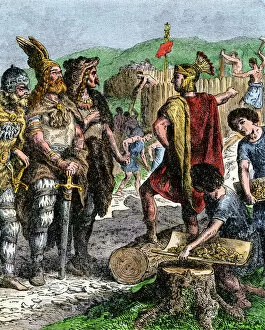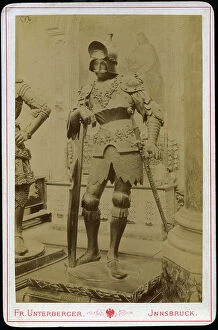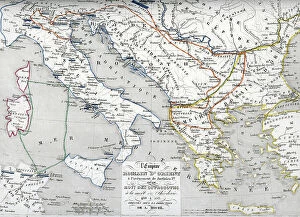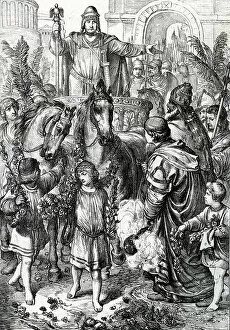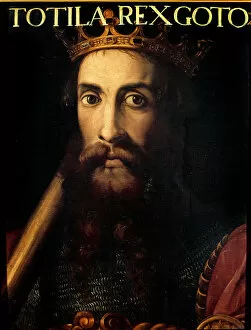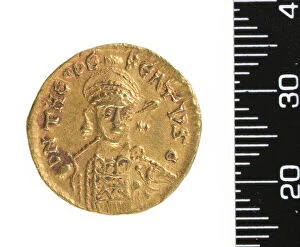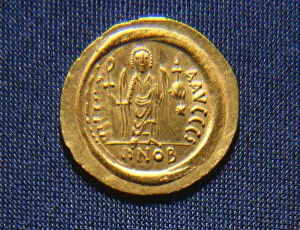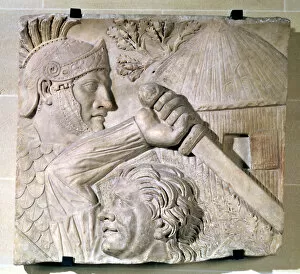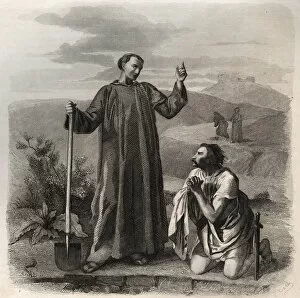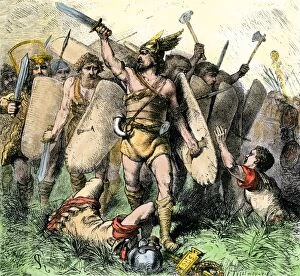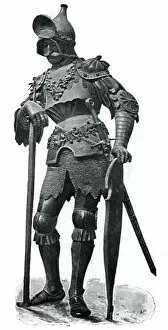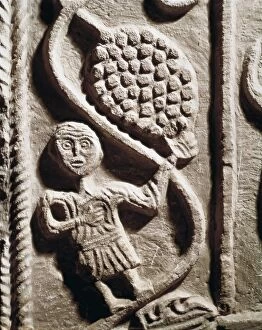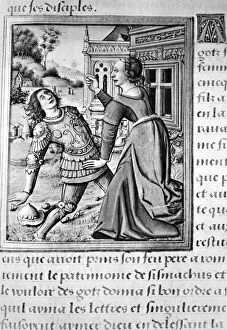Ostrogoth Collection
The Ostrogoths, a Germanic tribe known for their fierce invasions and rule over Italy, left an indelible mark on history
For sale as Licensed Images
Choose your image, Select your licence and Download the media
The Ostrogoths, a Germanic tribe known for their fierce invasions and rule over Italy, left an indelible mark on history. In 406 AD, their advance was halted at Fiesole, marking a turning point in the Germanic invasion. Theodoric the Great or Amale (455-526), King of the Ostrogoths, made his presence felt by visiting Rome in 500. This visit showcased his power and influence as he ruled over Italy. A captivating portrait of King Ostrogoth Totila or Baduila immortalizes his legacy. His reign was marked by significant events such as the death of Odoacer (433-493), Patrice of Italy, who fell to Theodoric's sword on March 16th, 493 in Ravenna. This event solidified Theoderic's authority and further established him as a formidable ruler. Coins minted during this era provide glimpses into the economic prosperity under Ostrogothic rule. A gold coin from c. 534-548 showcases intricate designs on its obverse side while another gold coin displays remarkable imagery on its reverse side. Narses' triumph over the Ostrogoths is depicted in historical accounts of barbarian invasions. These conquests shaped both Roman and barbarian civilizations alike. Inscriptions discovered in Ticinum testify to the existence of theaters that were part of this vibrant society. Artistic masterpieces like "The Great Ludovisi Sarcophagus" capture scenes from everyday life during this period - including a detailed depiction of a trumpet player adding musical flair to ancient festivities. King Totila's reign between 541-52 is commemorated through coins bearing his image - showcasing his regal stature and influence within Gothic society. Even beyond their own realm, ostentatious equestrian portraits like that of Hostilianus, son of Emperor Decius demonstrate how the Ostrogoths left an indelible mark on history.

